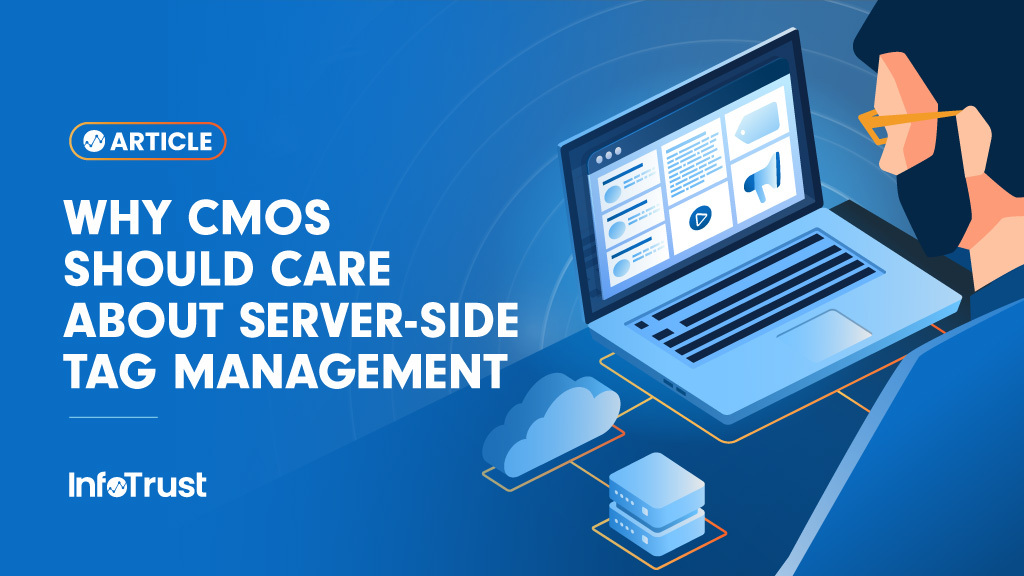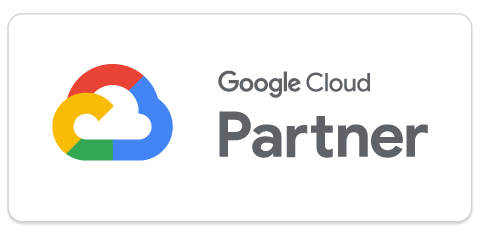Being a CMO in today’s shifting MarTech landscape is not a relaxed position. Technology is changing more often than the weather, and maintaining the status quo, let alone making progress, can be a bear of a task. I remember when every company had to have AMP pages and was scrambling to figure out how to tag them. In 2023, you rarely hear about AMP pages. Now, here we are, with server-side tag management being one of the next big trends, and I am sure people are wondering, is this the next big thing or another trend to ignore?
To separate wheat from chaff, we need to understand what makes wheat more valuable than chaff in the first place. In other words, why is server-side tag management just now becoming popular? Is it a new technology breakthrough, or more a reaction to the current environment? In this article, I will quickly touch on why server-side has sudden popularity and what it means to your marketing stack.
What is server-side tag management and what are the key benefits?
In simplest terms, server-side tag management is routing your data through a server that sits between your data endpoints and the point of collection (usually the user’s computer). On the client-side, or your customers’ computer, all data collection and processing happens on their computer in an environment you don’t own. Server-side tag management is about picking up that tracking code and moving it to a server that you control so that you have more ownership and control over your data. Imaged below is a simple example of of server-side tagging, along with short and long-term benefits.

Short-Term Benefits:
- Site speed increase (due to less code on side)
- Larger addressable audience (Facebook cAPI, Google Conversions API)
- Realtime-data enrichment (can add enrichment data such as CLV score before sending to platforms)
Long-Term Benefits:
- First-party durable data collection
- Long-term data ownership
- Future-proof architecture
First, let’s address the question, Is server-side tag management technology new?
In 2017, I did a fully server-side implementation of Google Analytics for a company focused on recruiting services. They just happened to be using a website backend that I was very familiar with and we could offer this before it was a thing the public was doing. We completed the project and the client was over the moon. Our Chief Growth Officer, who had sold the project, asked me why they were so happy about this. He wanted to understand why they asked for this and why it was so special. I told him, “If everyone knew this was possible, they would only do it this way.” Server-side tracking offers far more control and benefits than client-side, which I will get into shortly.
So if it is better, why isn’t server-side tag management a standard practice already?
As previously mentioned, technology changes fast. For marketers, the most important changes are usually around the ability to measure and track users traveling through platforms. Without going too far into technical details, third-party cookie depreciation is seriously inhibiting the ability for marketers to track users. Browsers like Safari and Firefox are blocking pixels from operating correctly, and there is a rise in ad blockers being adopted. The public has become increasingly aware of hyper-targeted data collection and most technology providers are adapting how software performs to meet demands of the public. This leaves client-side tracking, a tracking system built on third-party cookies and limited functionality, in a bad place. It was this situation that was the impetus for the sudden rise of server-side as server-side addresses the client-side pain points well while also providing some new features previously not as available to marketers.
When should I invest in server-side tag management?
While there are a few timelines to think about when deciding when to adopt server-side, the decision can be different for each company. Something to keep in mind is you might already have a significant percentage of your customer base that is living in a world without third-party cookies. Safari has already fully depreciated third-party cookies, and Chrome plans to do so in the second half of 2024. It should be a relatively straightforward process to analyze the impact Safari’s termination of third-party cookies had on your marketing operations if you possess a data warehouse for marketing, a first-party data source, and an analyst. If you don’t have those first-party structures, that might just be another reason server-side is right for you. The decision on when to start server-side investment usually depends on this list of questions:
- How many of your users are currently using a browser without third-party cookies?
- Of the percentage of users already in a “cookieless” future, how much has that percentage changed overall measurement and addressable audiences?
- What percentage of users do we suspect are using ad blockers?
- If we plan to leverage first-party data systems to avoid vendor lock-in or to build first-party audiences in a CDP, when do we need to start streaming data for such a system?
Understanding the above, and a few more questions, will give you an idea of the impact server-side will have on your stack and also gives you an idea of where server-side sits on the future roadmap of your durable marketing infrastructure. By understanding how client-side limitations have impacted your stack, you can estimate what the compounding returns in measurement, addressable audiences, overall data quality, and ultimately ROI will be for adopting server-side.



